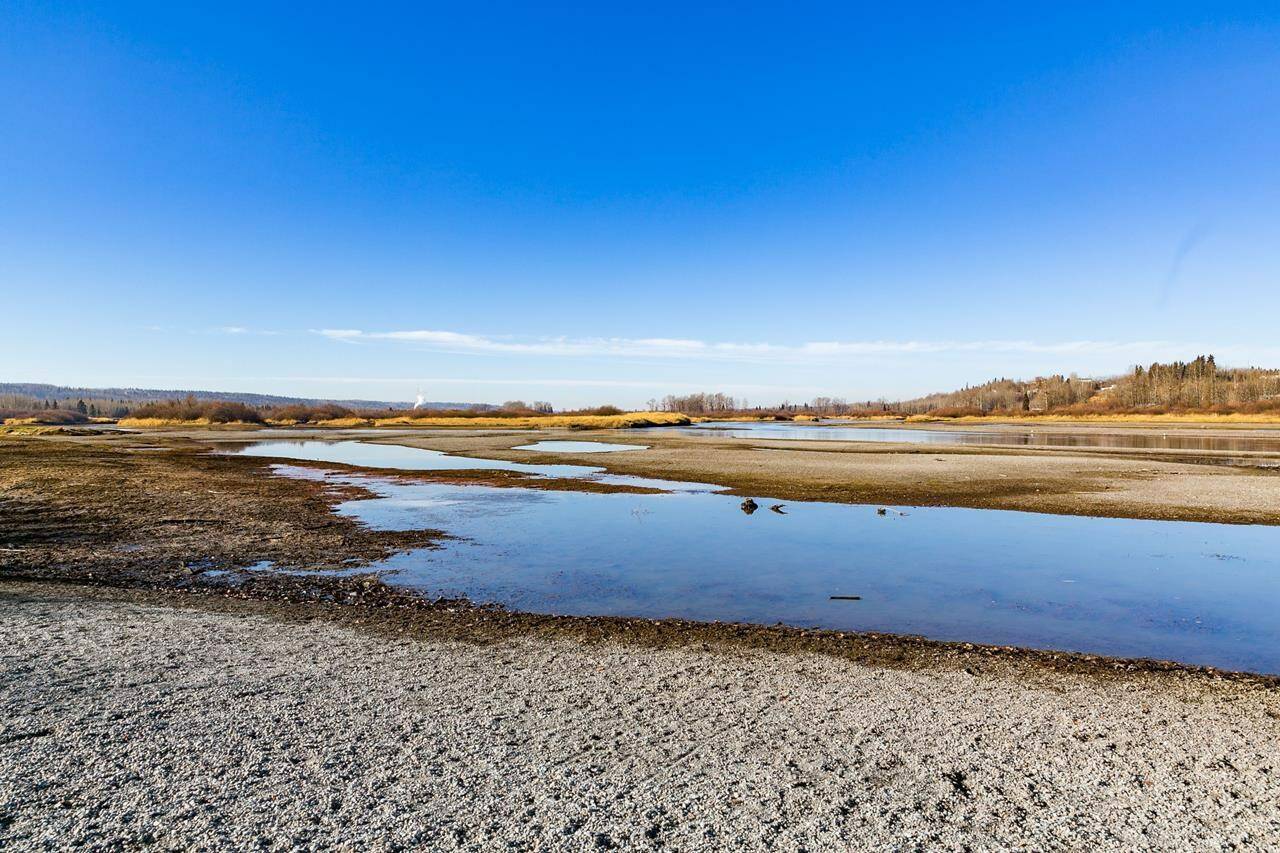A British Columbia regional district and three neighbouring First Nations have agreed to work together to restore a river that has been diverted for the last 70 years in order to generate hydroelectricity for aluminum smelting and the province’s power grid.
The Regional District of Bulkley-Nechako and the Nadleh Whuten, Saik’uz and Stellat’en First Nations formalized their partnership to improve the health of the Nechako River in a memorandum of understanding signed this fall.
The agreement comes as two of the nations are also waiting for a court ruling on a petition first filed in 2011 seeking an order that would require the restoration of the Nechako and its fisheries. The hearings began in the fall of 2019 and finished last spring.
The Nechako, among the major tributaries of the Fraser River, runs through the town of Vanderhoof in B.C.’s central Interior.
The river’s flows are regulated by a 1987 agreement between the federal and provincial governments and Rio Tinto Alcan, the mining giant’s aluminum division. The company periodically releases water from the reservoir of the Kenney Dam, completed in the 1950s, to provide hydropower to its aluminum smelter in Kitimat. It has also sold power to the province since 1978.
Vanderhoof Mayor Gerry Thiessen, who is also chair of the board of directors for the regional district, said the river’s disruption has contributed to the degradation of salmon habitat, large ice jams and the erosion of riverbanks in the community.
Last fall the town saw “water flowing in areas that had never flowed before at that time,” said Thiessen, although higher levels of government and the company told him all was well.
The memorandum states that restoring the health of the Nechako River requires that the 1987 agreement be replaced. Decisions about how the river is managed should be made locally and the river should better resemble how it would have flowed naturally, Thiessen said.
“Residents here, both non-Indigenous and First Nations, we’ve been here always,” the mayor said in an interview. “We care about our environment and so when we find out that people in Victoria are making a decision as to the flow of the river, or in the case of the company, it’s someone out of Montreal, that just doesn’t work.”
Stellat’en chief Robert Michell said he has noticed a recent shift in Rio Tinto’s approach in talks on how the river’s flow is managed.
“They have always been very staunch in their position that they have the right to that river, no one else does, and they would run that river the way they see fit. That has changed,” Michell said in an interview. “They’ve come to the table, they’ve had negotiators, we’ve had their CEO who’s engaged in some of the discussions.”
Thiessen said he believed he was “seeing some changes from industry, some changes in government, but not really sure where those will exactly lead us to.”
Rio Tinto said in a statement it “actively supports efforts to improve the health of the Nechako River” and it’s committed to working with the Nechako First Nations, government and other stakeholders to review management of the reservoir.
“We believe that governance of the flows on the Nechako River should be an inclusive process that evolves over time,” the company said. “Reservoir management is a complex matter where a number of interests must be carefully considered and balanced, from ensuring a flow beneficial for the health of (the river), to flood management for communities and supplying power needed in the region.”
A website created by the company shows the water level in the reservoir each day and the rate the river is flowing through Vanderhoof. It also provides information on how the river is managed during different stages of the salmon spawning cycle.
Thiessen said he remembers in the 1950s when the Kenney dam reservoir was first being filled up and the bed of the Nechako river was rockier, providing shelter for salmon and sturgeon eggs and fry. Now, he said, the riverbed is silty and hard, making it easier for predators to scoop up juvenile fish.
The sediment has raised the riverbed, Thiessen said, and its 200-year floodplain includes much of Vanderhoof, affecting where the town can develop and grow.
The Ministry of Indigenous Relations and Reconciliation said in a statement it was aware of and supports the relationship between the three nations and the regional district laid out in the memorandum of understanding. The ministry did not respond to questions about the river’s management, saying the matter is before the courts.
Brenna Owen, The Canadian Press

